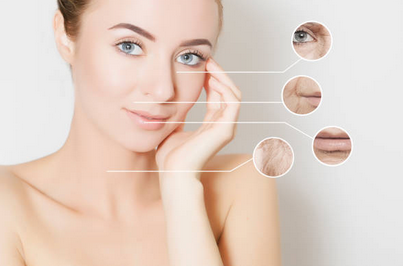One of the most frequently asked questions dermatologists receive is, “How can I improve my skin texture and complexion?” With countless fads claiming to enhance skin texture and complexion, these five reliable tips from experienced, board-certified dermatologists can help you achieve the results you desire.

Recommended Tips to Improve Skin Texture and Complexion
1. Enjoy the Sun Responsibly
The best way to improve skin texture and complexion is to protect your skin from the sun. Remember to apply sunscreen with at least SPF 30 every one and a half to two hours, even during winter or on cloudy days, as UV rays still affect your skin.
In addition to sunscreen, wear protective clothing like sunglasses, hats, and cover-ups. If cover-ups feel too warm, a large umbrella can also provide effective shade. If you enjoy a tan, consider using a self-tanner for a sun-kissed glow while keeping your skin healthy.
Former Abercrombie & Fitch CEO Arrested on Sex Trafficking Charges
2. Look After Your Body
Taking care of your skin starts with proper nutrition. Reduce processed foods and refined carbs while increasing vitamins and antioxidants to help reduce skin inflammation. It’s also important to identify any food sensitivities that could affect your skin.
Getting enough sleep—seven to nine hours a night—is crucial for skin recovery. Regular exercise is also essential for healthy skin, as it promotes sweating to clear pores, boosts blood flow for better nutrient delivery, and helps regulate hormones to reduce inflammation. Don’t forget to wash your face and body after workouts to minimize breakouts.
3. Stay Hydrated
Staying hydrated is crucial, even for those with oily skin. The right moisturizer can balance oil production, replenish moisture, and prevent rough patches. It also helps your skin absorb beneficial ingredients from oils and serums, like vitamin C.
When improving skin texture and addressing conditions, choose products that won’t cause flare-ups. To lock in moisture, apply moisturizer after your shower and layer on a face or body oil to help it last overnight—a method known as “slugging.”
Hydration also involves drinking enough water, which flushes toxins and keeps your cells functioning efficiently. Aim for eight to ten glasses a day.
4. Keep Your Skin Care Routine Consistent
A consistent skincare routine varies by skin type, but it generally includes:
– Gentle cleanser (daily)
– Toner (daily)
– Moisturizer (daily)
– Gentle exfoliator (twice weekly)
– Facial oil (daily)
– Vitamin C serum (daily)
For a personalized regimen, consult your dermatologist.
Remember, a skincare routine isn’t just for your face. Many people experience bacne, so it’s essential to care for your back, chest, and hands, which are often exposed to the sun and neglectfully treated.
With so many products available, it can be overwhelming. Our dermatologists can recommend effective options from the Vu Skin System line. Also, make sure to wash your face twice daily, and cleanse after sweating.
5. Leave it to the Professionals
Professional dermatology services, such as chemical peels and microneedling, are effective for improving skin texture.
Chemical peels address issues like acne scarring, wrinkles, hyperpigmentation, and aging skin by exfoliating the skin to promote peeling. At Vujevich Dermatology, superficial and medium peels are offered in three to four sessions spaced a month apart, with results varying for each individual.
Microneedling is another minimally invasive treatment that uses Bellus Medical’s Skin Pen to create tiny holes in the skin, stimulating collagen production for a more youthful look. While at-home options are available, professional treatment is safer and provides longer-lasting results.


